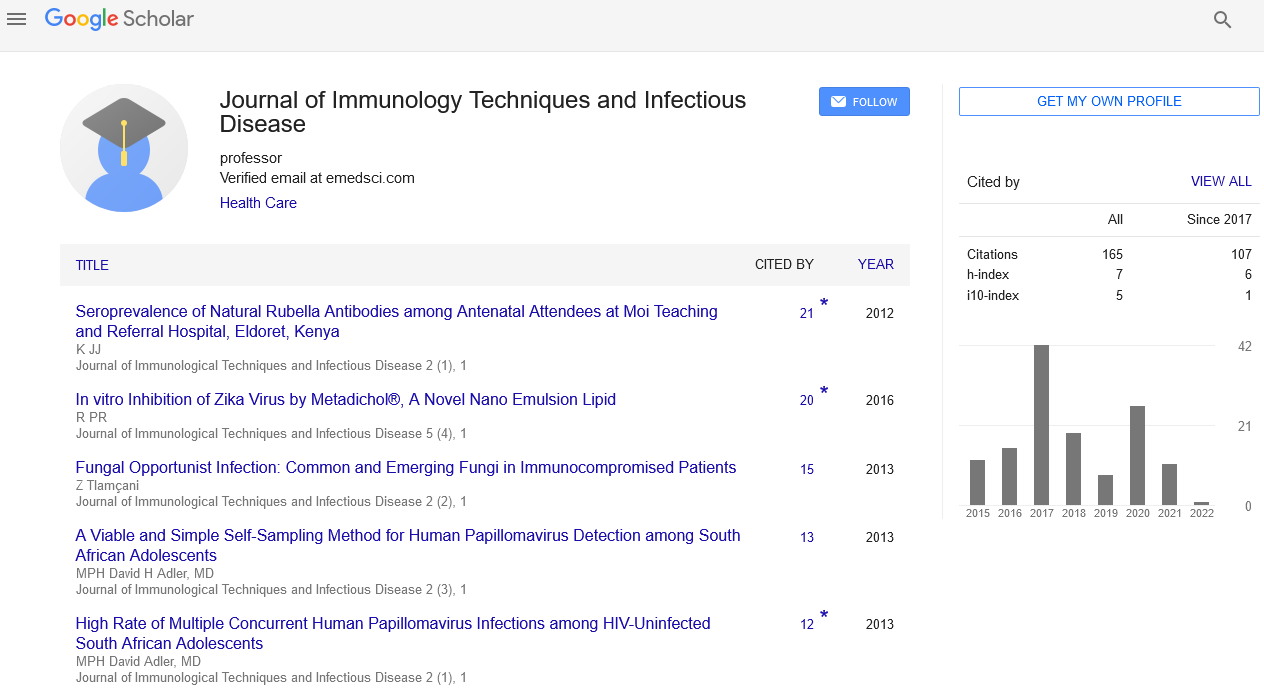The threat of zoonotic diseases and ebola virus disease specifically
Stef Stienstra
Royal Dutch Navy, Netherlands
: J Immunol Tech Infect Dis
Abstract
Public health systems are not always prepared for huge outbreaks of infectious diseases. Although the in the past several public health institutes were prominent surveyors of infectious diseases and very active in the mitigation of infectious diseases both in- and outside their country of origin, like the French Institute Pasteur, Dutch Tropeninstituut and many others Institutes, the investments in worldwide public health was in the last decennia far less compared to curative healthcare. With the recent Ebola Virus Disease outbreak in West Africa we see now a new wave of growing interest in Worldwide Public Health. Zoonotic diseases are the most dangerous for outbreaks as the population does not have natural nor artificial (from vaccination) immune response to new emerging diseases. The Ebola Virus Disease outbreak in West Africa is such an example. As the new strain of the Ebola Virus in West Africa has a longer incubation time and is only slightly less lethal compared other Ebola Virus strains, the threat of spreading among the population is far bigger. Especially when the epidemic enters denser populated areas. The mitigation of a highly infectious and deadly disease outbreak has several aspects for which most public health systems in the world are not trained well enough. NGO’s helping to fight the outbreak are often also better trained in curative treatments and have less experience with biological (bioweapon) threats for which the military are trained for. The UNMEER mission is unique in this. It is a setting in which military and civilian actors cooperate in fighting a biological threat. Protection is essential for health workers and smart systems have to be developed to prevent further spreading of the disease. But it is unfortunately not only the biosafety, which has to be considered, but also the biosecurity, as misuse of extremely dangerous strains of microorganisms cannot be excluded. Several zoonotic infectious diseases, like anthrax, small pox and also the haemorrhagic fevers like Ebola Virus Disease are listed as potential bioweapons. With this extra threat in mind both biosafety and biosecurity has to be implemented in all measures to fight outbreaks of highly infectious diseases, as we are now doing in West Africa.
Biography
Stef Stienstra is a Strategic and creative consultant in biomedical science, with a parallel career as a Commander of the reserve of the Royal Dutch Navy. For the Dutch Armed Forces he has responsibility for the counter measures in CBNRe threats and (medical) consequence management both in a military and a civilian (terrorism) setting. He is strategic functional specialist for “Health & Environment” of the 1-Civil-Military-Interaction Command (1-CMI) of the Dutch Armed Forces and for 2015 also in the NATO Response Force (NRF), which is in 2015 the responsibility of the 1-German-Netherlands-Corps (1-GNC). He was the director of the 2014 World Congress of CBRNe Science & Consequence Management in Tbilisi, Georgia. In his civil career he works internationally as consultant or as scientific supervisory board member for several medical and biotech companies, merely involved in biodefense. He is also visiting professor for Punjab University in Pakistan and Rhein-Waal University in Germany. He has finished his studies in Medicine and in Biochemistry at the University of Groningen in The Netherlands and has extensive practical experience in cell biology, immunohaematology, biodefense and transfusion medicine. His natural business acumen and negotiation competence helps to initiate new successful businesses, often created out of unexpected combinations of technologies. His good understanding of abstract science combined with excellent skills in the communication of scientific matters to non-specialists, helps him with strategic consulting at top level management.
E mail: Stienstra@t-online.de
 Spanish
Spanish  Chinese
Chinese  Russian
Russian  German
German  French
French  Japanese
Japanese  Portuguese
Portuguese  Hindi
Hindi 
